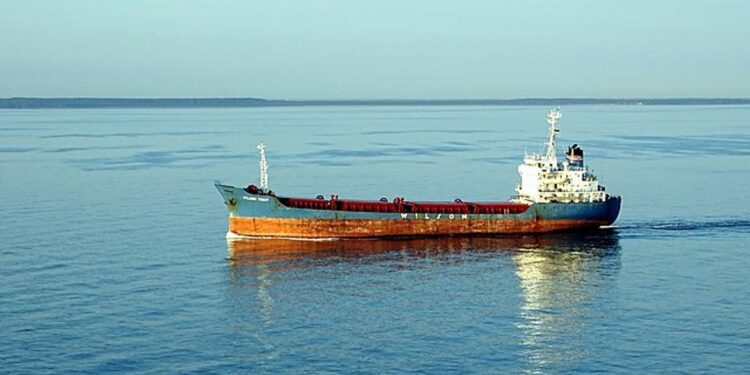On December 25, 2024, the Eagle S, a ship transporting Russian oil, severed one power cable and four telecommunications cables connecting Finland and Estonia. Finnish authorities boarded the vessel and placed it under seizure. The crew is accused of intentionally dragging its anchor to damage these critical undersea connections.
This incident, along with others, has raised fears of a sabotage campaign orchestrated by Russia as part of its “hybrid” warfare—a term used for attacks where it is difficult to identify the perpetrator or confirm intentionality. However, the recurrence of such events has convinced developed countries that they face a genuine threat.
Since the start of the war in Ukraine, the Baltic Sea has become a confrontation zone between Russia and its neighbors. Closed off by straits controlled by Denmark, it is bordered by eight NATO member countries. At the easternmost point of the sea lies the port of Saint Petersburg, vital for Moscow’s exports. Further south, the Russian enclave of Kaliningrad has been transformed into a major military base.
Incidents in the region are frequent. For example, on January 17, a French maritime patrol aircraft was targeted by a Russian military radar—an event described as “serious” by U.S. General Christopher Cavoli, NATO’s Supreme Allied Commander Europe.
► How far could the confrontation escalate?
“Cutting two cables is not enough to impact the connectivity of countries in the region, but it sends a strong geopolitical message. It’s a way of saying: ‘We know your vulnerabilities in this domain, and here’s what we can do,’” explained Kevin Limonier, associate professor of Slavic studies at the French Institute of Geopolitics. “I can’t help but see this sabotage as a rehearsal for what could happen in the Celtic Sea, where many critical cables for global Internet functionality connect Europe to America and Africa.”
Some European countries, including France, have condemned Russia’s increasingly aggressive actions. Moscow is “testing limits” and “multiplying threats,” stated French Defense Minister Sébastien Lecornu in February 2024. In November, Richard Moore, head of Britain’s MI6, described Russia’s sabotage campaign against Kyiv’s Western allies as “incredibly reckless” after an arson attack on a Ukrainian company based in London was linked to Moscow.
Other arson attacks have targeted warehouses in Poland, Germany, the Czech Republic, Latvia, and Lithuania that stored humanitarian aid for Ukraine, as well as factories producing weapons and ammunition for Kyiv. Plans to deploy incendiary devices on airplanes were also reportedly foiled. “Without going into detail, I can confirm that these Russian plans targeted not only Poland but also airlines worldwide,” said Polish Prime Minister Donald Tusk on Wednesday, January 15. Moscow has denied these accusations.
► Who are the “ghost ships” behind many incidents?
“Ghost ships” refer to outdated oil tankers used by Russia to circumvent the embargo. These vessels operate without valid insurance, fly flags of convenience, and frequently change names and official ownership.
Since 2022, to evade sanctions, Russia has acquired hundreds of these ships through intermediaries, including the Eagle S, responsible for the December 25 cable severance. On January 11, the Eventin, carrying 99,000 tons of Russian oil, narrowly avoided causing an oil spill off the German coast.
Baltic Sea nations are determined to take action against these vessels. The European Union has already sanctioned 59 such ships, banning them from docking in European ports. The EU is also considering insurance checks, while Russia has threatened to escort these ships with Russian navy frigates, further increasing the risk of confrontation.
► How is NATO responding to these threats?
In response to the rise in sabotage incidents and the presence of Russian ghost ships, NATO Baltic Sea members—Germany, Denmark, Estonia, Finland, Latvia, Lithuania, Poland, and Sweden—decided on January 14 to intensify Atlantic Alliance patrols to monitor and secure the Baltic Sea.
This new mission, dubbed Baltic Sentinel and led by NATO, includes ships, aircraft, submarines, satellites, and surveillance drones supplied by member states. Finland, the most active participant, will deploy three warships and an ASC 890 surveillance aircraft. Sweden will contribute four coast guard vessels. The German navy will also take part, according to Chancellor Olaf Scholz, though he provided no further details.
A week earlier, the UK-led Joint Expeditionary Force (JEF)—comprising units from Nordic, Baltic, and Dutch states—announced it would enhance its monitoring of Baltic undersea infrastructure using a new AI-assisted surveillance tool. This system immediately shares information about suspicious vessels in the area with JEF members and NATO.
These Baltic Sea attacks are likely to be discussed at the extraordinary meeting on European defense between EU, UK, and NATO leaders on February 3 at Limont Castle in Belgium.
——
A sea of networks
With an average depth of just 55 meters, the Baltic Sea is crisscrossed by cables and pipelines vital for communication and energy exchange between neighboring countries. Many have been damaged since the war in Ukraine began.
September 2022: Explosions destroy the Nord Stream 1 and 2 pipelines, which transport gas from Russia to Germany.October 2023: The Balticconnector gas pipeline between Finland and Estonia and several telecommunications cables along the same route are suddenly severed.November 2024: The C-Lion1, a strategic high-speed data cable linking Finland and Germany, is cut.December 2024: The EstLink 2, an electric cable between Finland and Estonia, and four data cables are severed.
Source link : http://www.bing.com/news/apiclick.aspx?ref=FexRss&aid=&tid=67948d2aeab748889fb62e9eef618b2c&url=https%3A%2F%2Finternational.la-croix.com%2Fworld%2Fthe-baltic-sea-a-tense-zone-between-russia-and-europe&c=2696687905468786817&mkt=de-de
Author :
Publish date : 2025-01-24 15:00:00
Copyright for syndicated content belongs to the linked Source.


